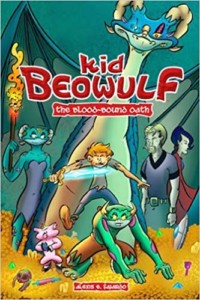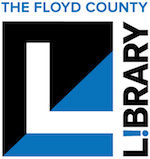 You remember Beowulf, right? It’s that poem you had to read about in English class about a guy who fights monsters and then (spoiler alert for a thousand year old work of literature) gets killed by a dragon. You may have also seen one of the handful of Beowulf movie adaptations, although the poem usually winds up as a magic-and-monsters soap opera. Perhaps it’s because the plot seems too simple, basically consisting of three episodes – Beowulf’s fight with the monster Grendel, Beowulf’s fight with Grendel’s mother, and Beowulf’s death saving his kingdom from a dragon that had been unwittingly awakened.
You remember Beowulf, right? It’s that poem you had to read about in English class about a guy who fights monsters and then (spoiler alert for a thousand year old work of literature) gets killed by a dragon. You may have also seen one of the handful of Beowulf movie adaptations, although the poem usually winds up as a magic-and-monsters soap opera. Perhaps it’s because the plot seems too simple, basically consisting of three episodes – Beowulf’s fight with the monster Grendel, Beowulf’s fight with Grendel’s mother, and Beowulf’s death saving his kingdom from a dragon that had been unwittingly awakened.
In reality, Beowulf – just about the oldest surviving work in English literature – is a poem of great complexity and intricate structure with layers of narrative and stories within stories touching on themes of betrayal, honor, heroism, redemption, the fall of a golden age, and the inescapability of time, old age, and fate. Despite being out of the literary canon for centuries (Beowulf was only rediscovered and reintroduced to the world just over two hundred years ago), it has been one of the most influential works in fantasy literature. Elements of Beowulf are deeply woven into J.R.R. Tolkien’s The Hobbit (1937; 365 pages) and The Lord of the Rings (1955; 1193 pages) and the poem contains complicated clan struggles and betrayal amongst warring houses worthy of anything written by George R.R. Martin.
One recent adaptation of the poem is Alexis E. Fajardo’s Kid Beowulf series of graphic novels. Neither a straight adaptation nor a re-telling of Beowulf with the hero as a child, these books use the setting and characters from the epic poem to build a new world and a new story, while staying true to some of the complex themes of dynastic struggles and torn loyalties of the poem that usually don’t make it into other adaptations. Marketed towards fans of Percy Jackson and other mythological fantasy, Kid Beowulf is best suited for a tween audience, and especially fans of the Bone graphic novels or Faith Erin Hicks’ Nameless City series – which also feature character-driven narratives and complex world-building.
The Kid Beowulf Series:
- The Blood-Bound Oath (2016; 223 pages)
- The Song of Roland (2017; 259 pages)
More Beowulf:
- Beowulf translated by Seamus Heaney (2000; 213 pages): Probably the most popular translation of the poem, although not the most literal, this book does contain a side-by-side translation with the original Anglo-Saxon version.

- Beowulf directed by Robert Zemeckis (2007; 114 minutes): Typical of most film adaptations of the poem, this animated movie (based on a screenplay written by fantasy author Neil Gaiman) can best be regarded as “loosely” based on Beowulf.
- Boys of Blur by N.D. Wilson (2014; 195 pages): One of the more interesting “adaptations” of Beowulf, this spooky YA fantasy novel set in the Florida Everglades tells its own story but draws themes and plot elements from the poem.
- Grendel by John Gardner (1971; 174 pages): This wry, irreverent adult novel re-tells the story from the monster’s point-of-view and has become something of a classic in its own right.
- Eaters of the Dead by Michael Crichton (1976; 345 minutes): This historical fiction audiobook by the author of Jurassic Park tells a “realistic” version of the legend from the point-of-view of an Arab diplomat caught up in the Viking world of the Dark Ages.
- The 13th Warrior directed by John McTiernan (1999; 103 minutes): This film version of Michael Crichton’s Eaters of the Dead stars Antonia Banderas.
- Beowulf read by Benjamin Bagby (2007; 98 minutes): Maybe the best way to experience Beowulf is to hear it read-aloud in the original language. The poem was written in Old English, also called Anglo-Saxon, a thousand-year-old version of our language slightly reminiscent of German. This is the next best thing to hearing it recited aloud in a mead hall with a leg of mutton in front of a roaring fire.
